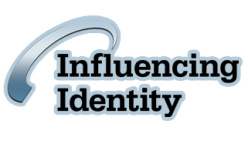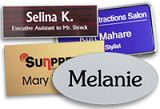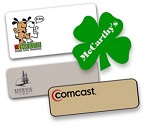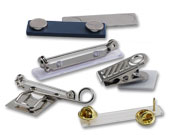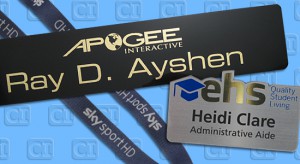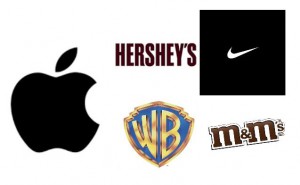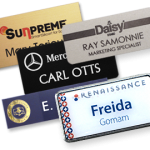All personalized identification comes with pros and cons.
Seeing them listed can help you to see why you should be wearing a name tag every day!
PROS and CONS: Case #1
Con, From: A Case Against Name Tags
They’re not very chic. They encourage tacky behavior. And there are better ways to introduce and connect people.
Pro, From: Do the Name Tags at Your Event Suck?
Tools like business cards and name tags are the hardest working elements of high-performance collaboration in meetings, events, and social occasions, and we barely give them a thought when we design them.
Pro, From: Name Tag, Inc.
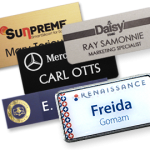 Name tags and name badges provide necessary corporate and company branding. This branding is important for all marketing needs. It distinguishes you from your competition and helps others to more readily recognize your quality. By using logos on name tags, you can create a focus to help drive your business.
Name tags and name badges provide necessary corporate and company branding. This branding is important for all marketing needs. It distinguishes you from your competition and helps others to more readily recognize your quality. By using logos on name tags, you can create a focus to help drive your business.
PROS and CONS: Case #2
Con, From: A Case Against Name Tags
If you want get people interacting (at large events), I think you should take a more interesting, active approach. Traditional name tags aren’t just tacky. They’re lazy.
Pro, From: Name Tag, Inc.
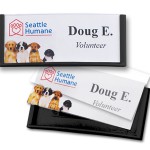 While adhesive name badges can be considered tacky, there are less traditional ways of handling large groups. Choose from a variety of other reusable name badge options. Speedy Badges and Mighty Badges are both great for using in large meetings or conventions. Each insert can be printed so names are all the same size. And they can even be printed with colors and logos to make them stand out.
While adhesive name badges can be considered tacky, there are less traditional ways of handling large groups. Choose from a variety of other reusable name badge options. Speedy Badges and Mighty Badges are both great for using in large meetings or conventions. Each insert can be printed so names are all the same size. And they can even be printed with colors and logos to make them stand out.
PROS and CONS: Case #3
Con, From: Ditch Those Employee Nametags Now, These Customer Service Experts Say
And then there’s the elephant in the room, so obvious I wasn’t sure I’d even mention it. Employees hate name badges. And the more creative and quirky the employee, the more likely they are to hate them. As the newest generation of employees are millennials, a very, very creative and quirky generation, and it’s best not to start an adversarial relationship with your employee at the word “go,” this is another factor to consider.
Pro, From: Name Tag, Inc.
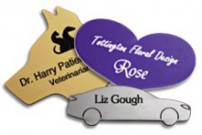 With a “creative and quirky” generation coming into the work force, name tags can be fun! Make them bright and interactive. Who says a name tag has to be boring? Add logos and graphics. Choose from an abundance of colors. There are metal name tags and plastic name badges. Whatever your choice, personalize it to meet your employee needs.
With a “creative and quirky” generation coming into the work force, name tags can be fun! Make them bright and interactive. Who says a name tag has to be boring? Add logos and graphics. Choose from an abundance of colors. There are metal name tags and plastic name badges. Whatever your choice, personalize it to meet your employee needs.
Overall, name tags are something that should stand out.
Make them memorable with your company branding, customization and personalization!
